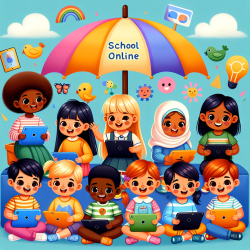In our fast-paced educational landscape, it's essential for teachers to continually evolve and refine their skills. A recent study titled "Developing an understanding of coherent approaches between primary and secondary teachers: a case study within the design and technology curriculum in Scotland" sheds light on the importance of collaboration between primary and secondary educators in the design and technology (D&T) curriculum. This blog will delve into the key findings of the research and provide practical tips for educators to enhance their teaching strategies.
Understanding the Research
The study explored how primary and secondary teachers define and approach D&T education, revealing a varied understanding and approach between the two sectors. While primary educators often associated technology education with the use of digital tools, secondary educators focused more on problem-solving, practical skills, and specific disciplines within D&T. This disparity can create challenges for students transitioning from primary to secondary education.
Key Findings
The research highlighted several important points:
- There is a lack of a shared definition of technology education between primary and secondary teachers.
- Primary teachers often view technology education as the use of digital tools, while secondary teachers focus on practical and problem-solving skills.
- Collaboration between primary and secondary educators is limited, impacting the coherence of the learning experience for students.
Practical Tips for Educators
To address these challenges and improve the coherence of the D&T curriculum, educators can take the following steps:
1. Foster Collaboration
Encourage regular meetings and joint professional development sessions between primary and secondary teachers. Sharing insights and strategies can help create a more unified approach to D&T education.
2. Develop a Shared Understanding
Work together to develop a common definition and understanding of D&T education. This can be achieved through collaborative workshops and discussions, ensuring that all educators are on the same page.
3. Utilize Real-World Applications
Incorporate real-world scenarios and problem-solving activities into the curriculum. This approach not only engages students but also helps bridge the gap between primary and secondary education.
4. Leverage Technology
While primary teachers often focus on digital tools, it's important to integrate these technologies into practical and problem-solving activities. This can help students see the broader applications of technology in real-world contexts.
5. Reflect and Adapt
Encourage educators to reflect on their teaching practices and adapt their strategies based on student feedback and outcomes. Continuous improvement is key to creating a coherent and effective learning experience.
Conclusion
By fostering collaboration and developing a shared understanding of D&T education, educators can create a more coherent and effective learning experience for students. This not only benefits students but also enhances the professional development of teachers.To read the original research paper, please follow this link:
Developing an understanding of coherent approaches between primary and secondary teachers: a case study within the design and technology curriculum in Scotland.










